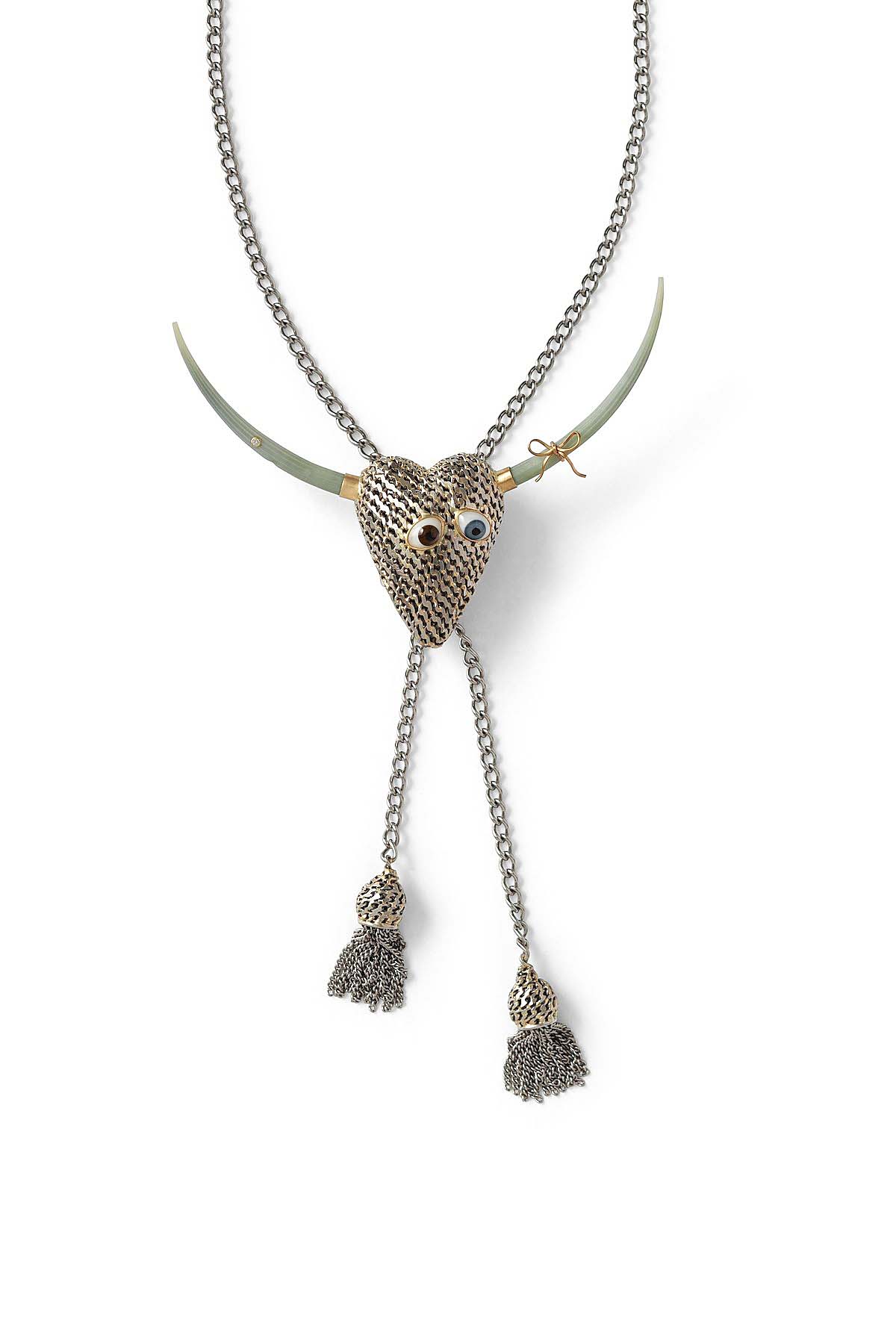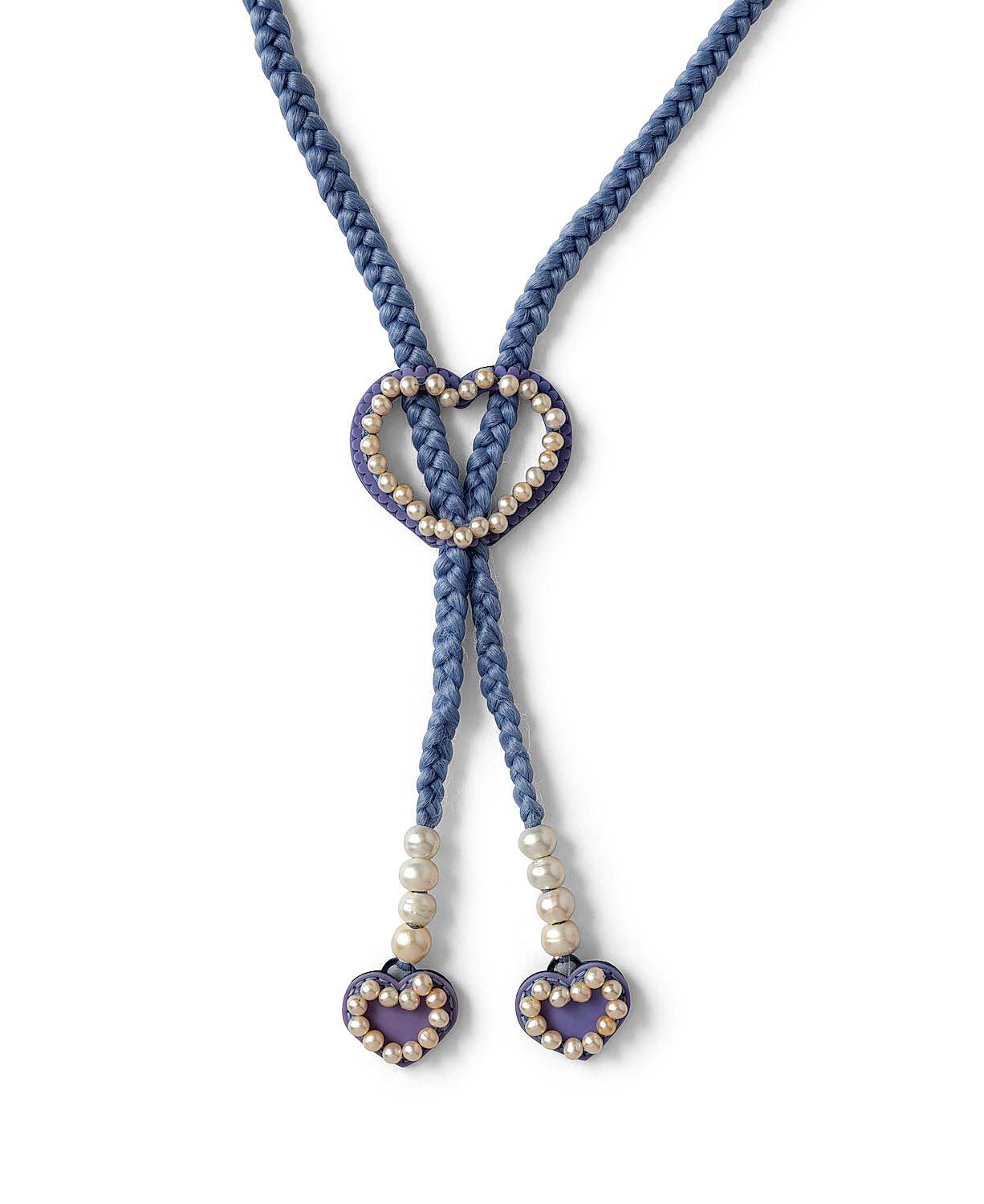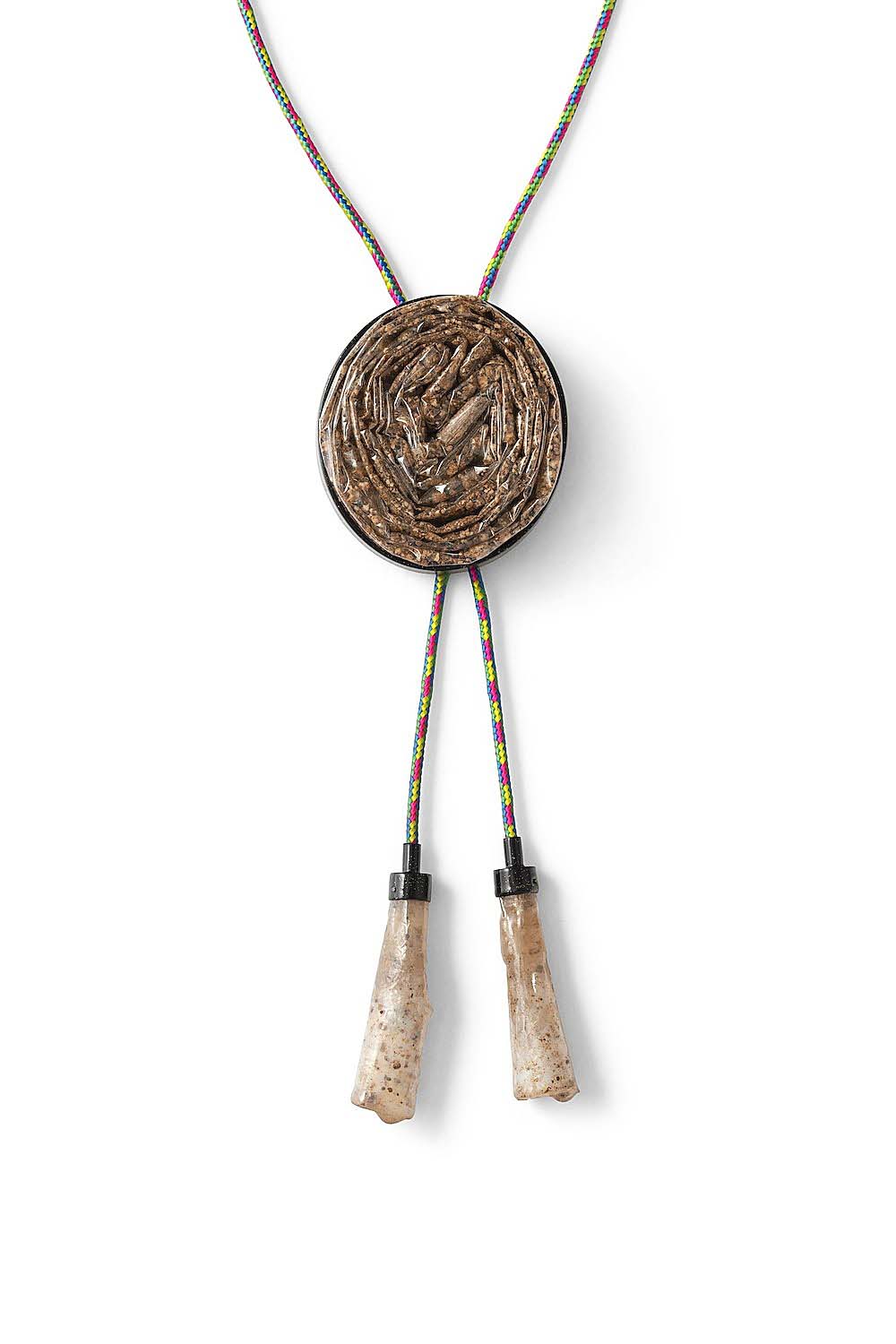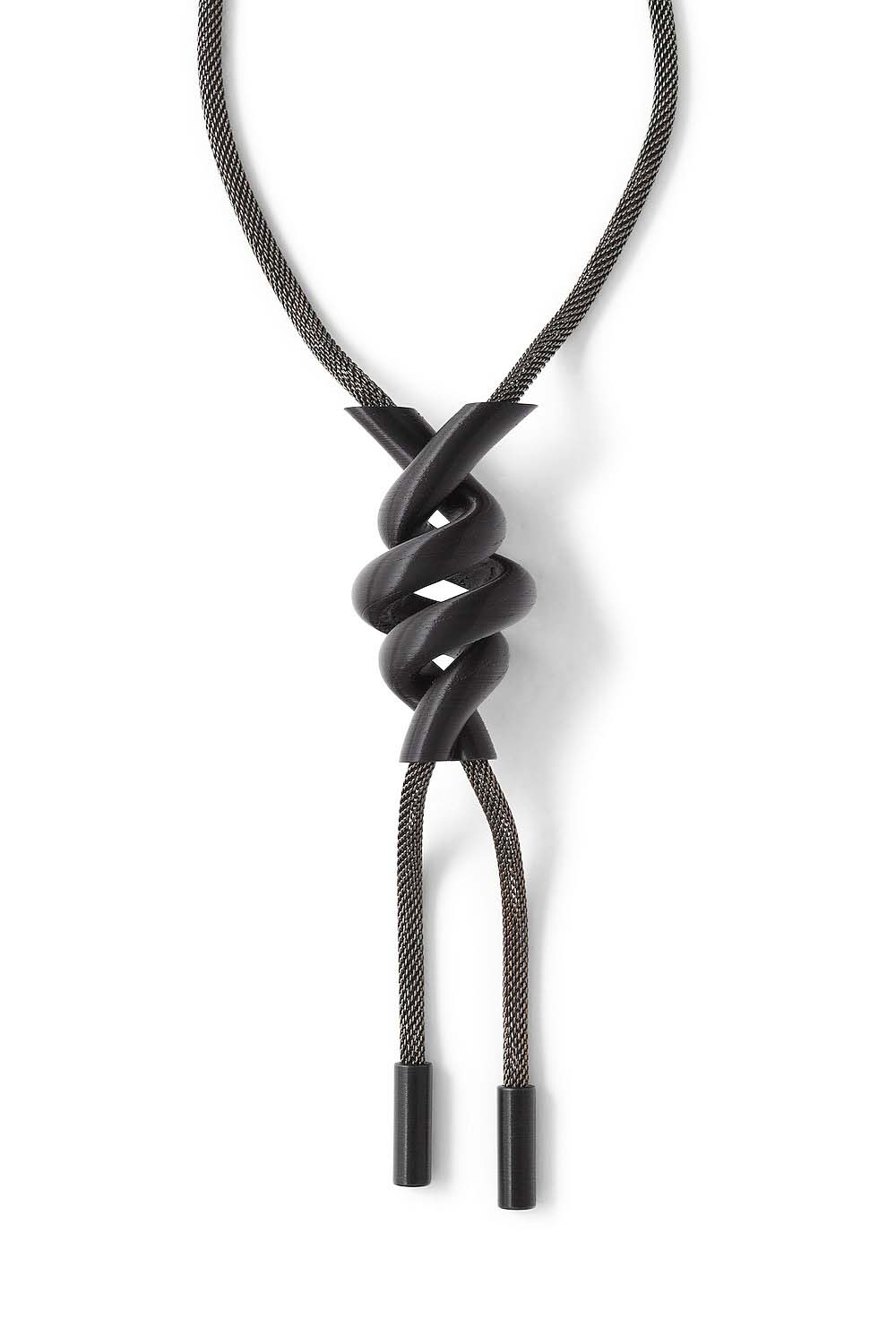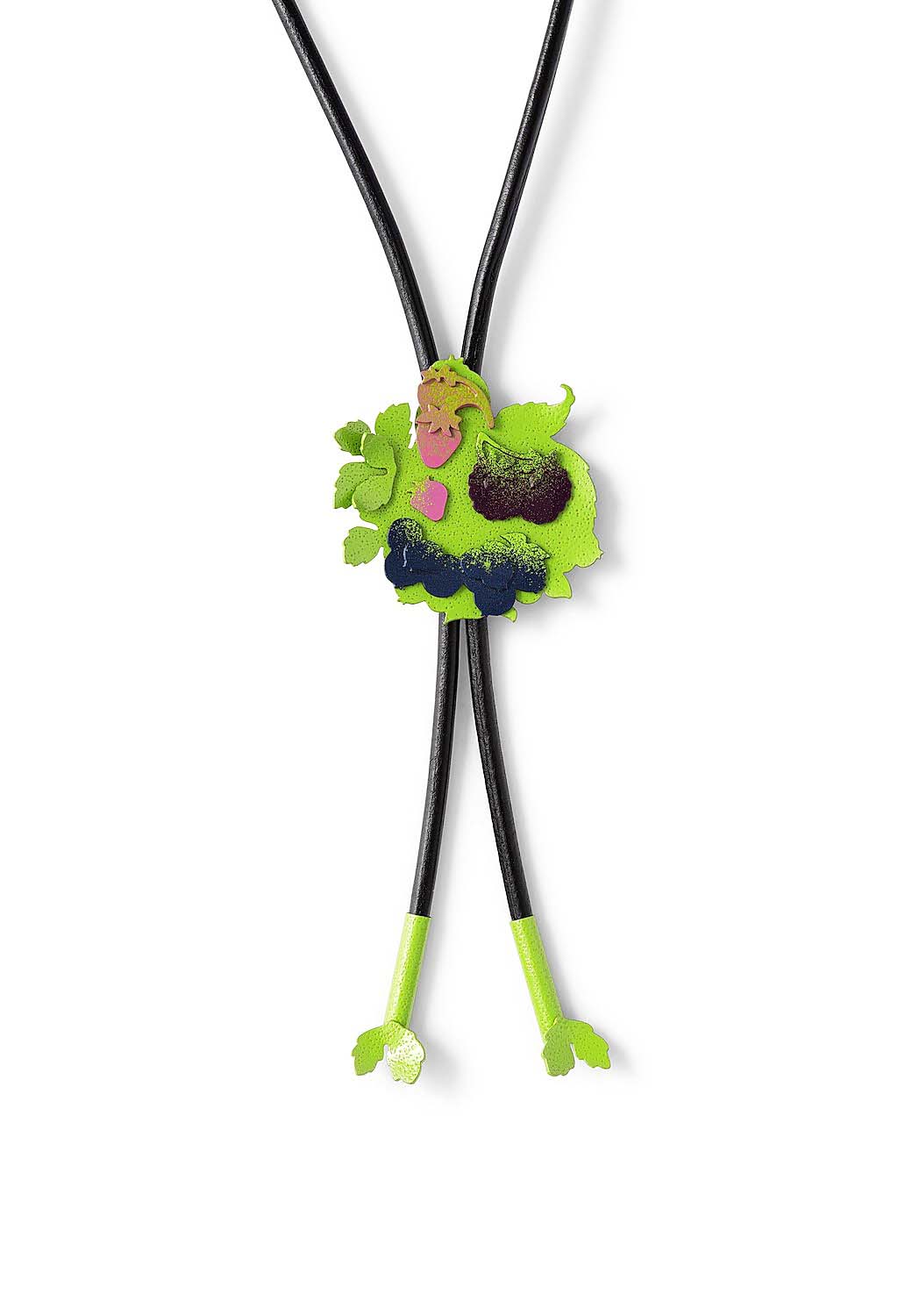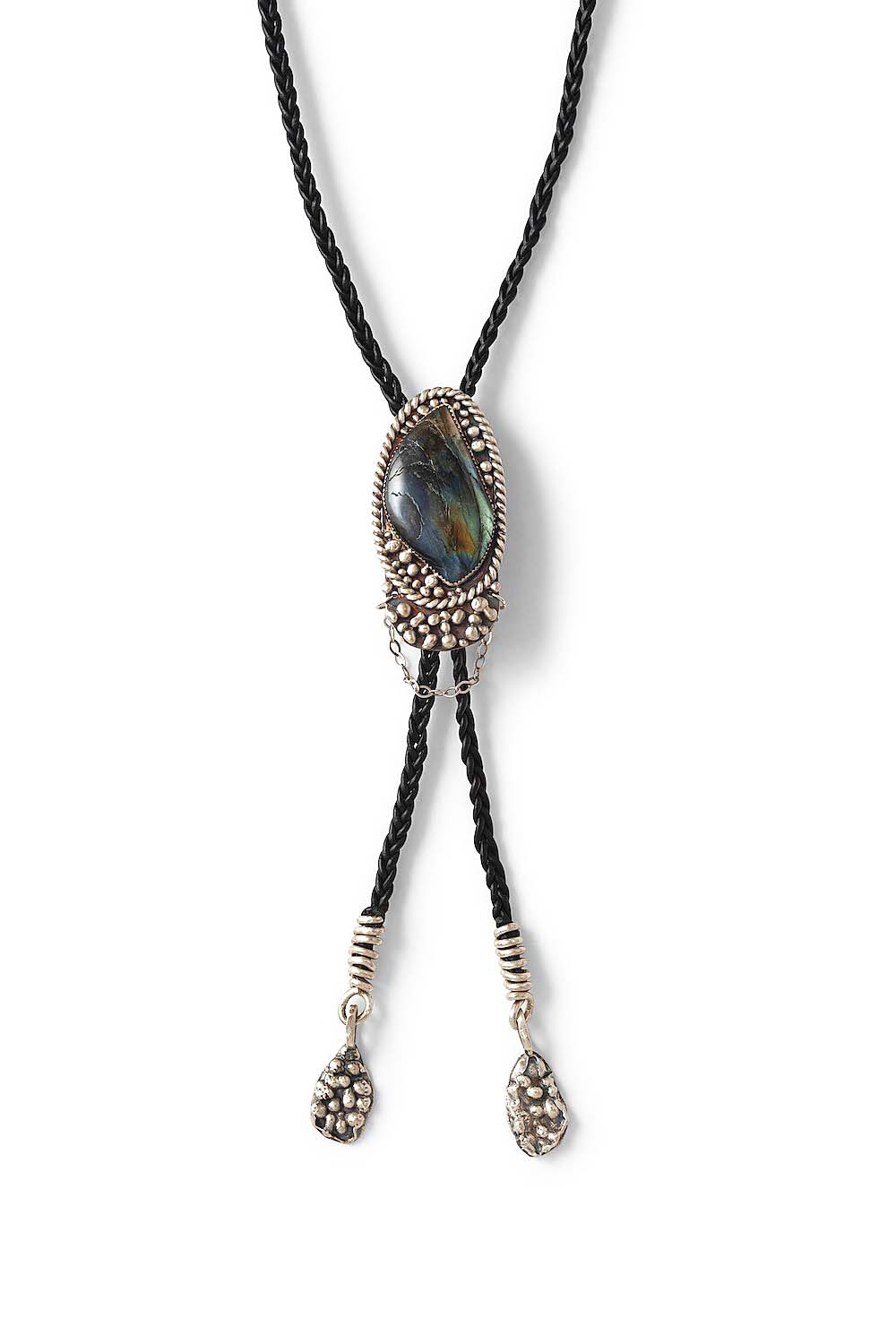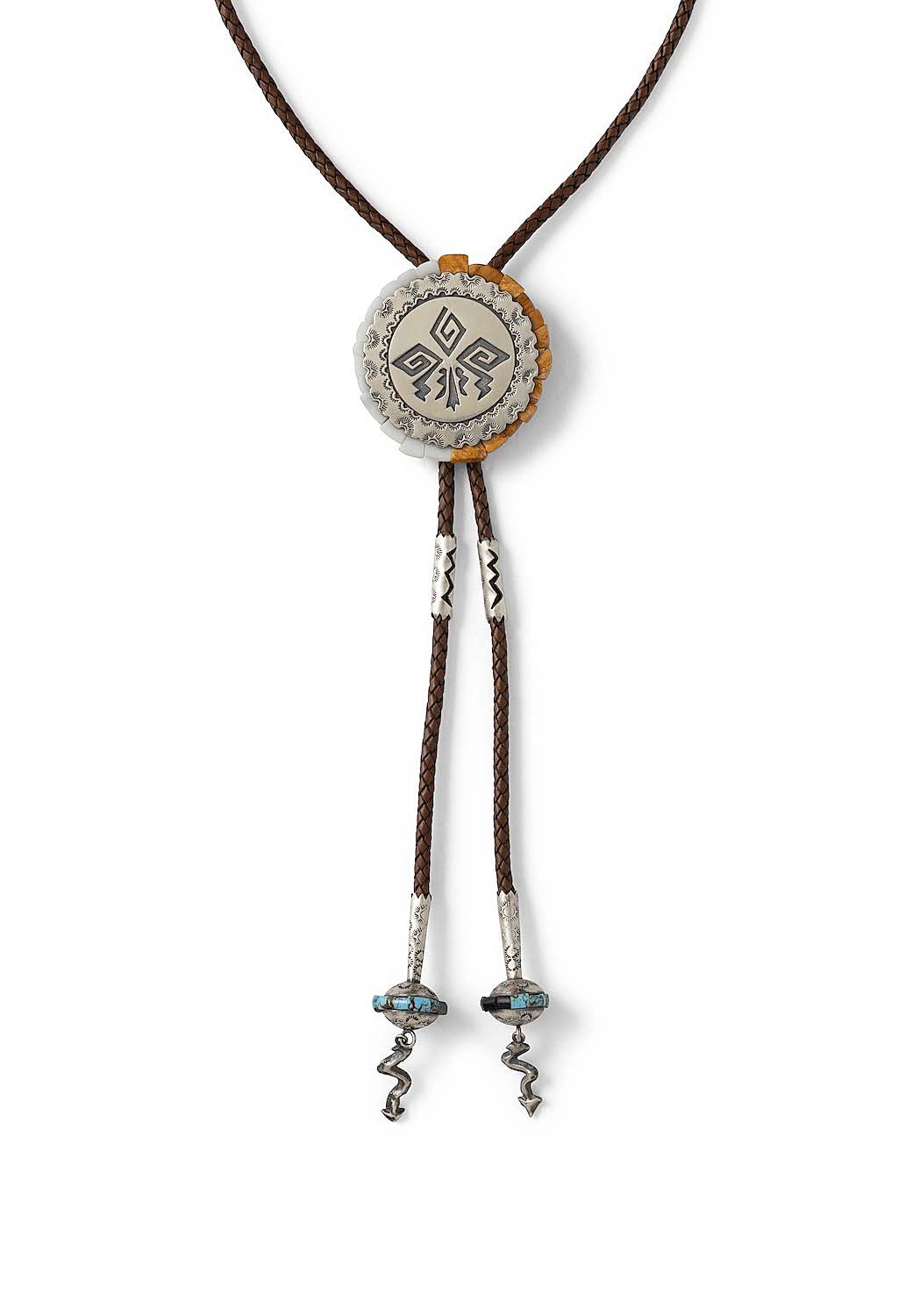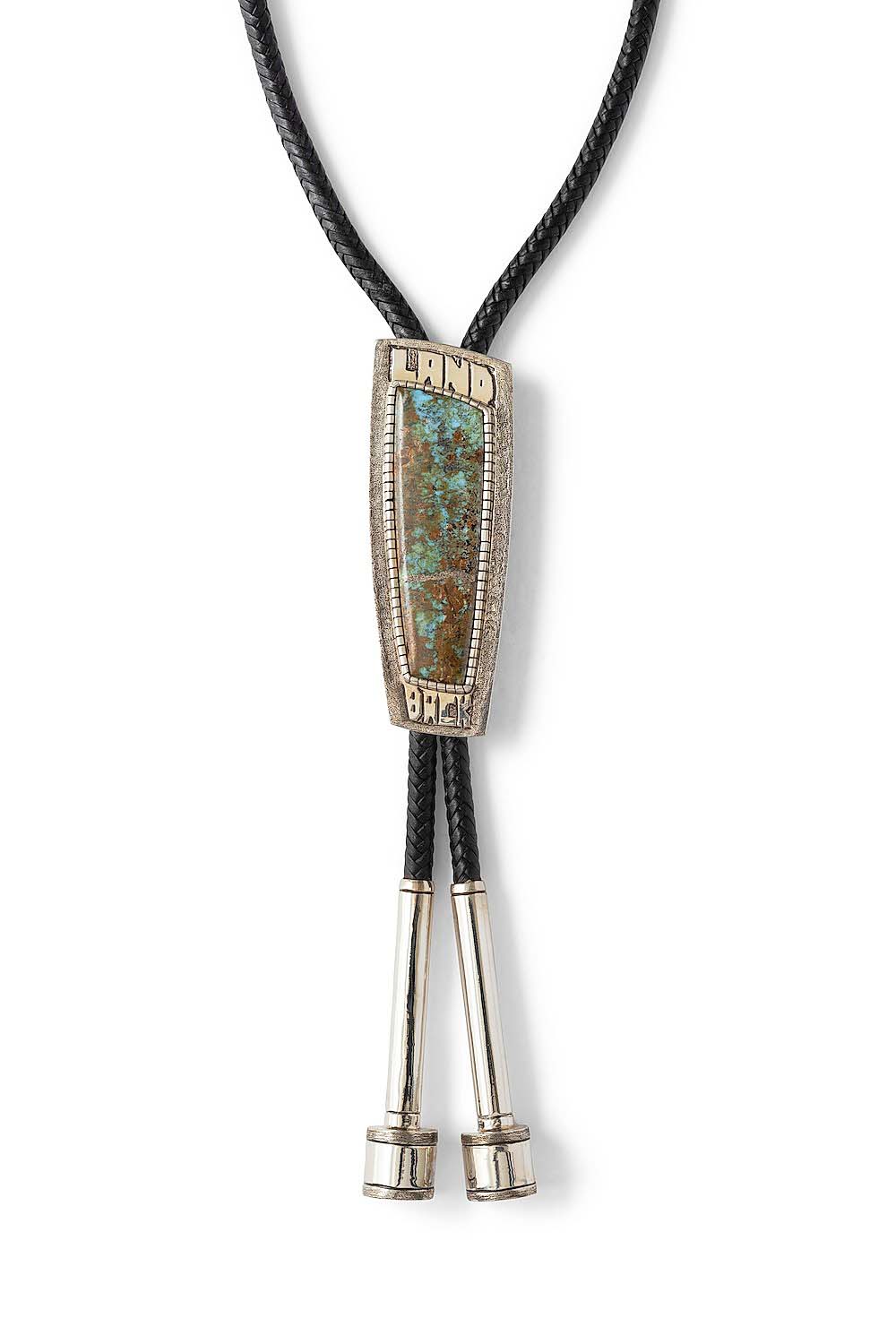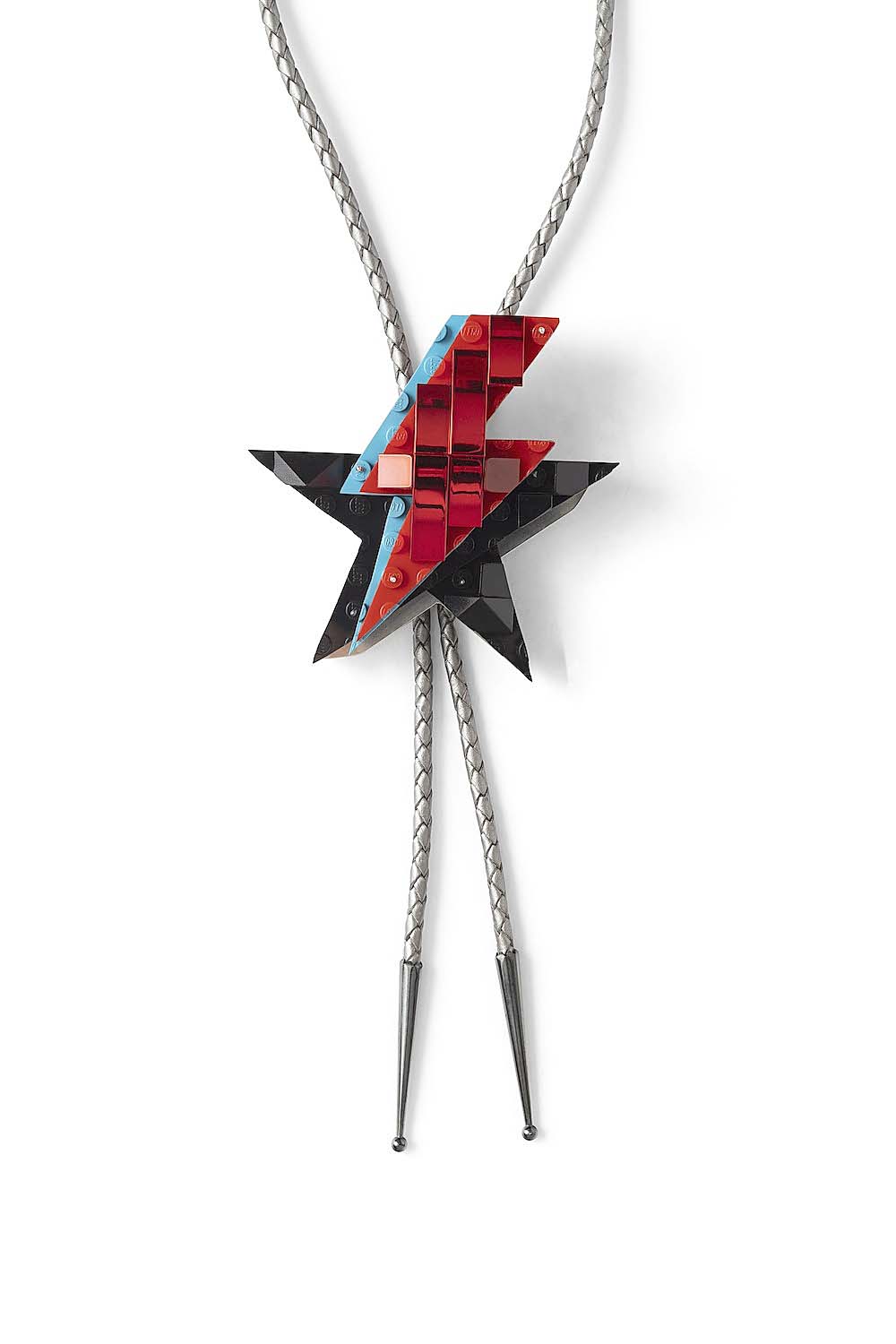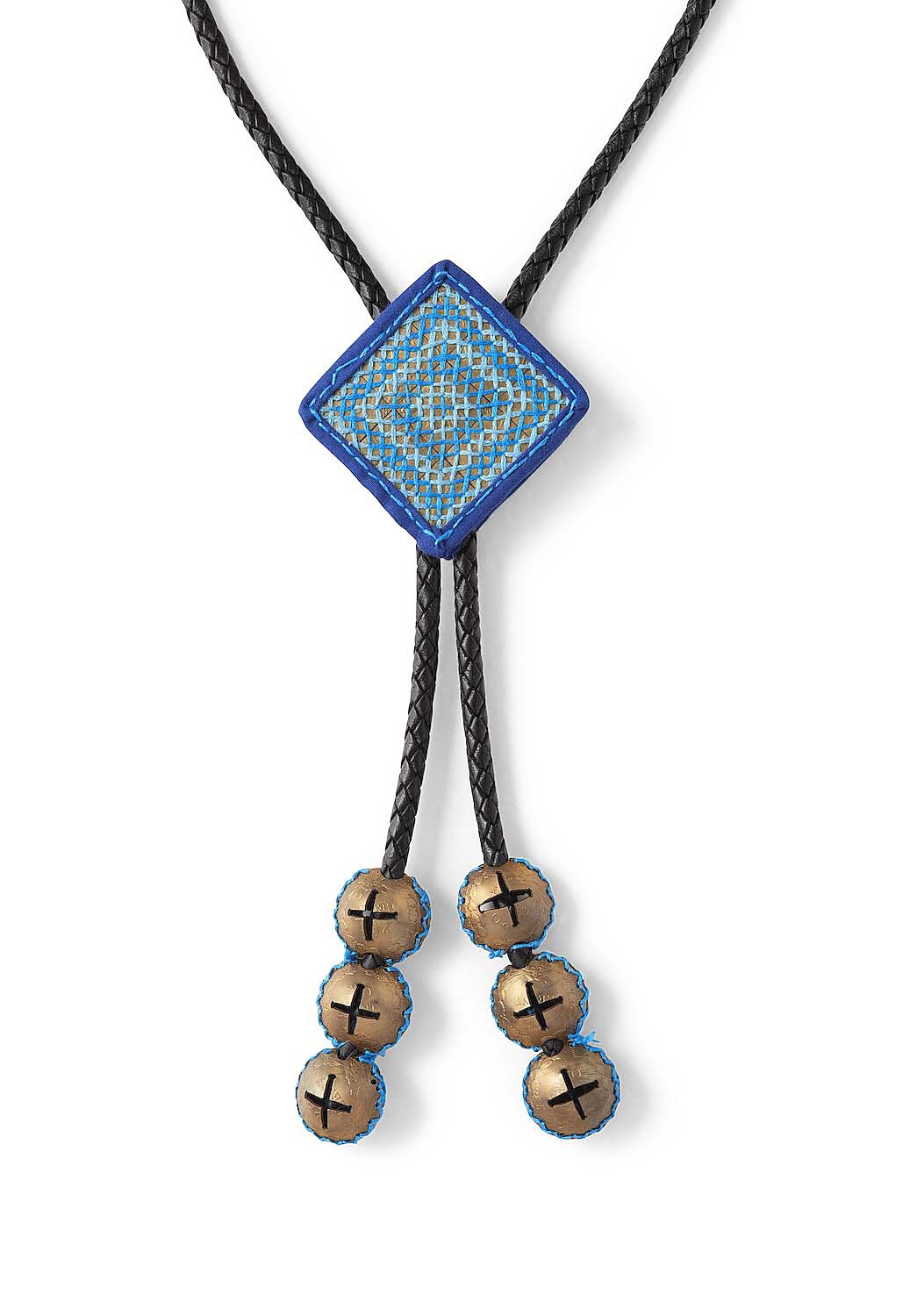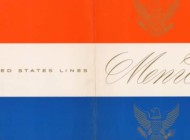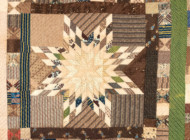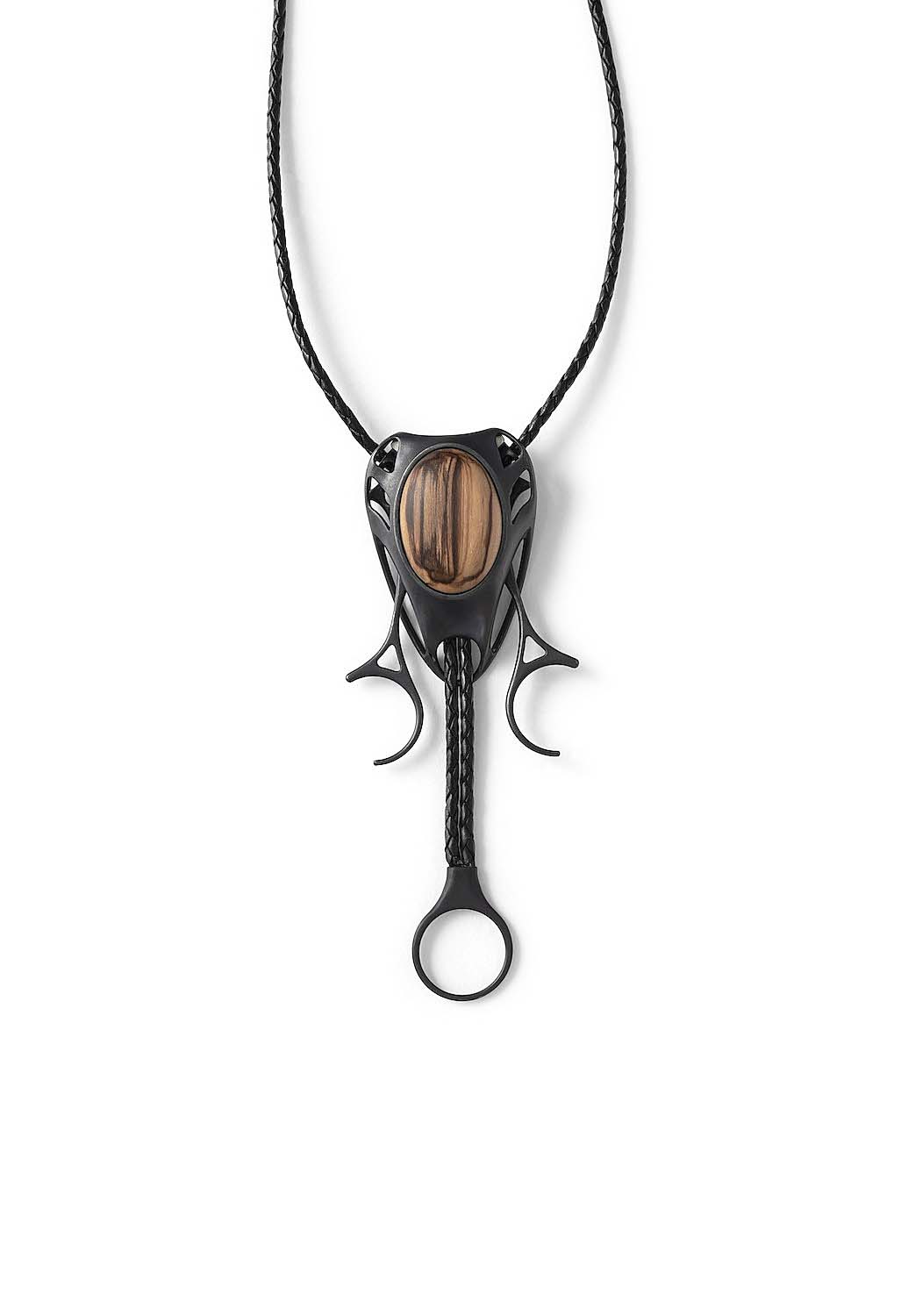
“Carapace” by Sean Eren (he/him), 2023; sterling silver, olive wood, stainless steel, aluminum, oil-impregnated bronze and chrome tanned; 16½ by 2¼ by ¾ inches. Dasha Wright photo.
By Andrea Valluzzo
BROCKTON, MASS. — Few pieces of jewelry and objects designed for personal adornment have as much of a murky, complicated or contentious history as the bolo tie. Few are as little known either. Necklaces, bracelets, earrings and cufflinks are all fairly well recognizable in form and thoroughly researched as they have existed for centuries in varying cultures.
Their youngest cousin, the bolo, however, can only trace its roots to the mid Twentieth Century in the American Southwest, where it was reportedly developed by Native American silversmiths and then later adapted by cowboys and the working class.
The bolo is ubiquitous in the American Southwest, and the late Arizona senator Barry Goldwater had an impressively large collection of bolo ties. Over the decades, many celebrities have also jumped on the bolo tie bandwagon. Notable wearers have included Elvis Presley and Sam Elliott. Rockabilly musicians and politicians, looking to make a design statement or just to appear folksy and approachable with their constituents, also favored the bolo. And, in an ironic gender-bending twist, some in the LGBTQ+ community have recently reclaimed the bolo, transforming the history of this object that once signified hyper-masculinity in the cowboy era.
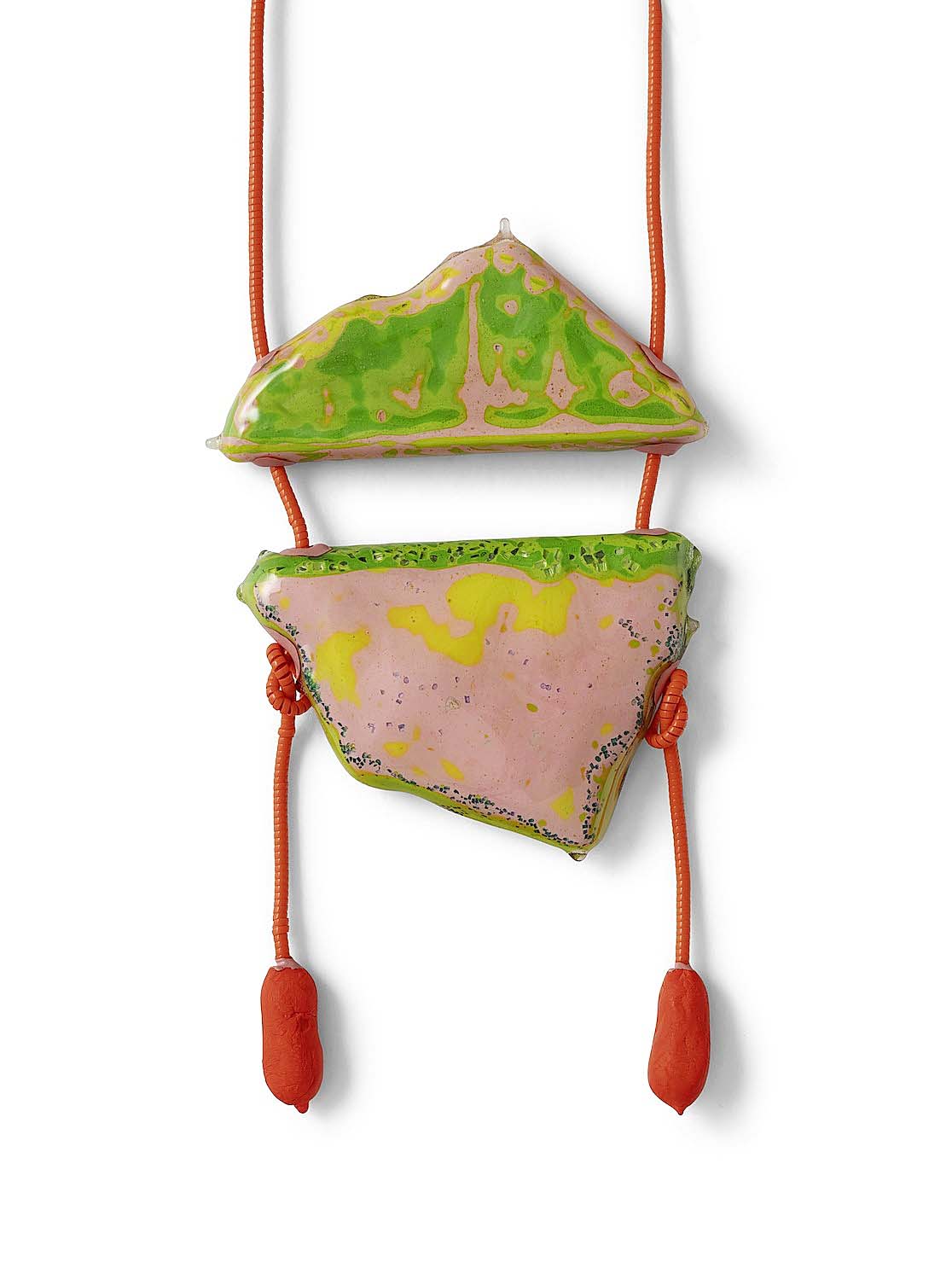
“Mons Bola” by Jillian Moore (she/her), 2023; epoxy and composite resin, paint, pigment, acrylic, brass, nylon, silicone-rubber; 30 by 7 by 1 inches. Dasha Wright photo.
While its history is complicated, the design of this necktie itself is fairly simple: a length of braided leather or fabric cording is embellished with decorative metal tips on the ends (called aiguillettes and often made of silver), and a decorative clasp or slide — often featuring a turquoise stone — is affixed to the middle. As a piece of jewelry, its rugged look is well suited as a metaphor for the Southwest and it was named Arizona’s official state neckwear in 1971 by then-governor Jack Williams.
When metalsmith and craft artist Hannah Toussaint was a student at the University of North Texas (UNT), building out her portfolio in preparation for her graduate studies applications, she looked into making a series of bolo ties. Her advisor Ana M. Lopez, professor of studio art: metalsmithing and jewelry, UNT, recommended she first do research. To the surprise of both, the information available on bolo ties was scant and often limited to the Southwest. For comparison, an online search of the collections at the Metropolitan Museum of Art in New York City reveals about 20 bikinis housed there but only one bolo tie. Niche jewelry exhibitions are common in the museum world. Even the tiara has been profiled but the bolo has rarely gotten its proper due, save for a 2011 exhibition at the Heard Museum in Phoenix, Ariz., and another organized by the same museum in 2015 that later traveled to the Gilcrease Museum in Tulsa, Okla.
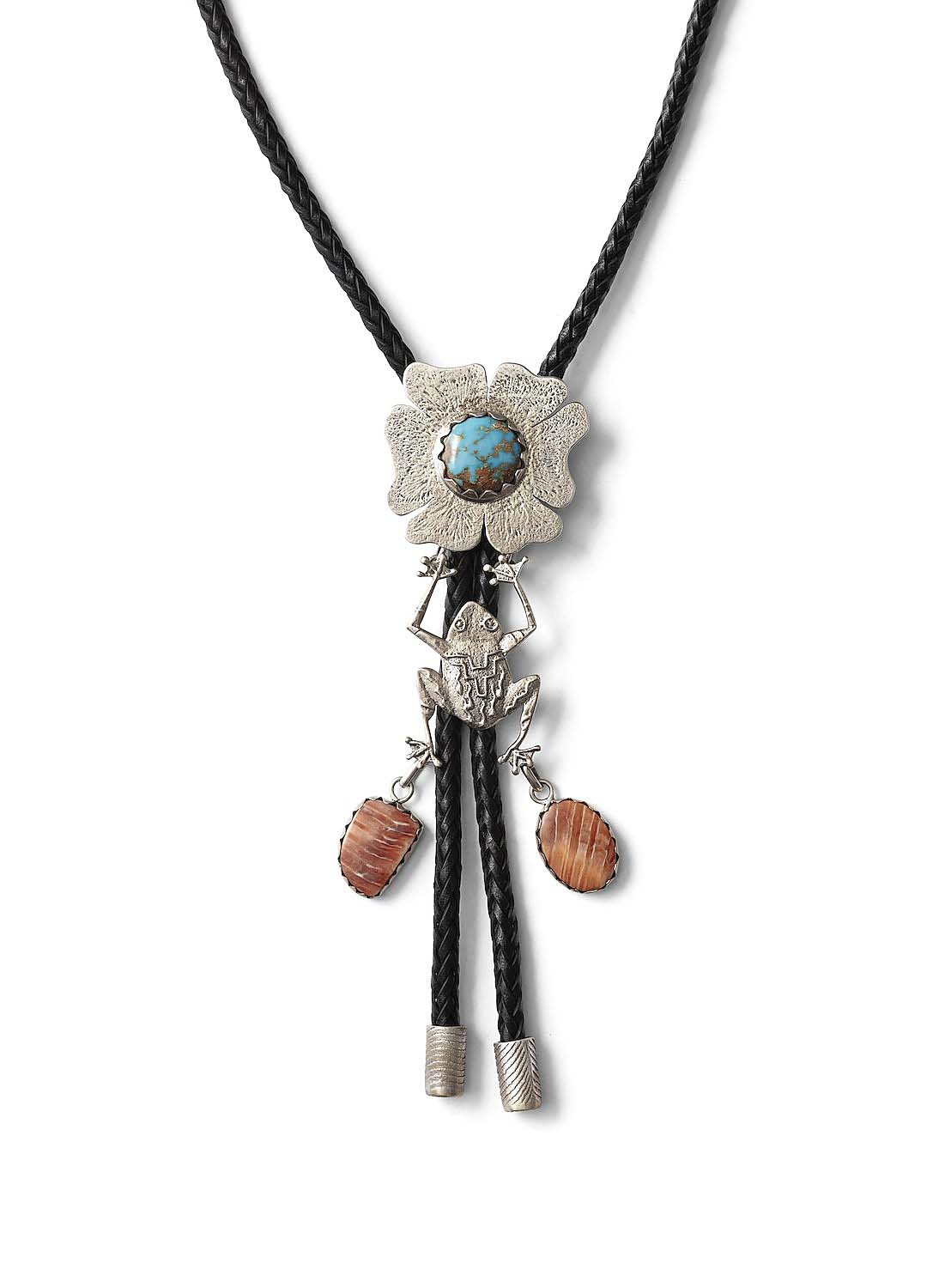
“Paa’qwa Prayers” by Jonah Hill (he/him) (Quechan/Hopi), 2023; sterling silver, Royston turquoise and Spiny Oyster shells; 24 by 2¼ by ¾ inches. Dasha Wright photo.
Eager to expand the base of knowledge about bolo ties beyond the Southwest, Toussaint, who is currently an MFA candidate at the University of Georgia, banded together with Lopez and Brian Fleetwood, assistant professor of studio art at the Institute of American Indian Arts, Santa Fe, N.M., and citizen of the Muscogee Nation of Oklahoma. They co-curated a traveling exhibition, “Everybody’s Bolos,” which debuted at the university but is now on view at the Fuller Craft Museum in Brockton. The exhibition not only introduces bolos to audiences not familiar with them while exploring the role of indigenous artists who first created them but also unpacks cultural and gender-based stereotypes surrounding the bolo.
Thirty contemporary artists — some who had never made a bolo before — applied their talents to creating one bolo each for the exhibition. The artworks on display range from examples that embody the traditional motifs of a bolo and are reflective of its Native American heritage to very modernist styles featuring unusual elements and materials. Exploring mortality with his creation, “Memento Mori Bolo,” James Thurman uses a material of his own invention, Thurmanite®, along with sterling silver, leather and painted pewter. Resembling hardwood, Thurmanite is made by layering recycled paper with resin and repeatedly sanding and polishing the material to a glowing sheen.
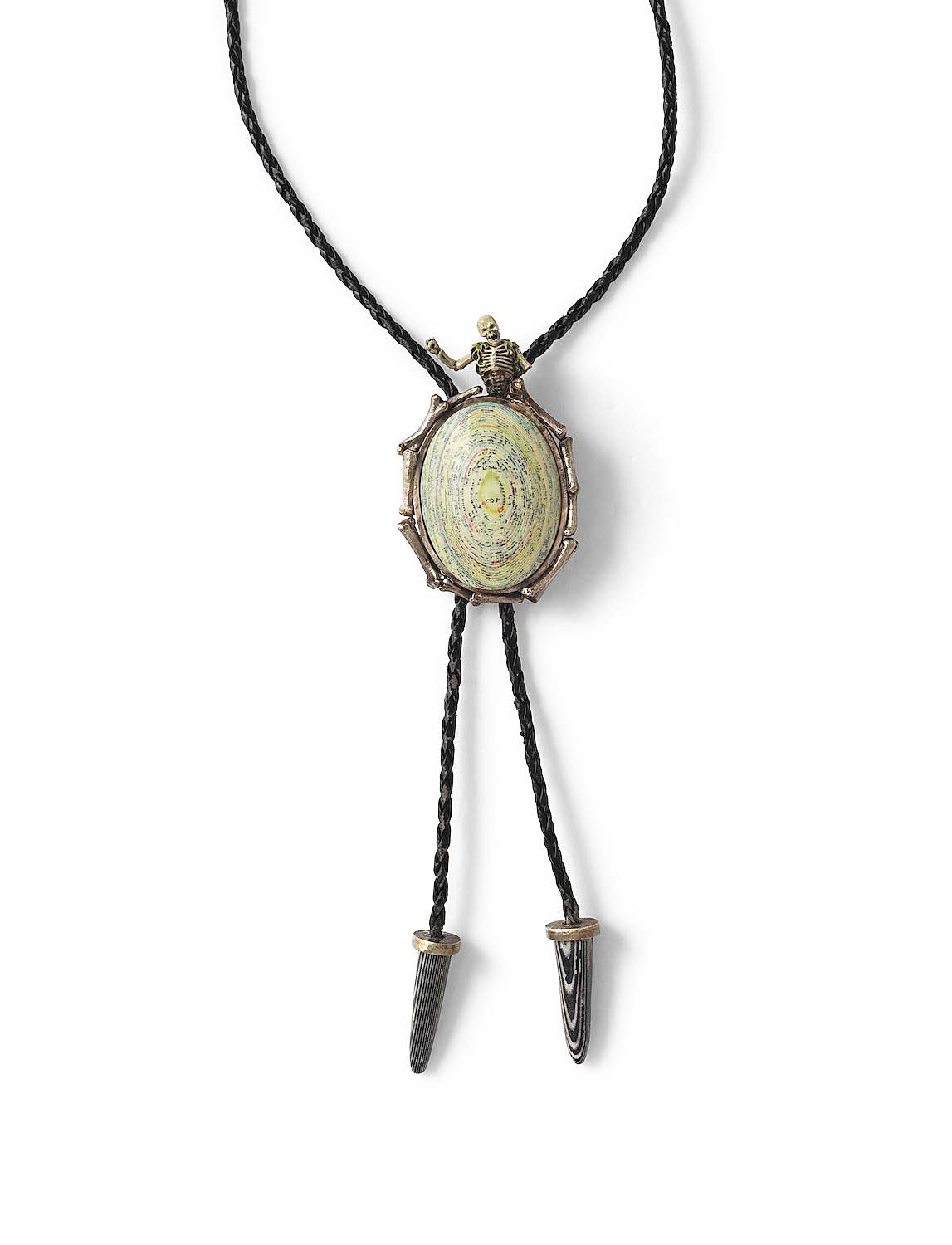
“Memento Mori Bolo” by James Thurman (he/him), 2023; Thurmanite®, sterling silver, leather and painted pewter (Reaper miniature 2043 sculpted by Bob Ridolfi); 18 by 1½ by ¾ inches. Dasha Wright photo.
Underappreciated for decades outside the Southwest, the bolo perhaps suffered from a case of regionalism as well as being closely tied to minority (indigenous) populations, Lopez explained. “It’s a marginalized object associated with a marginalized community, or, at the very least, a specific region,” she said. “Every six to ten years you can find something in the fashion magazines like so-and-so is rocking a bolo tie or the reemergence of the bolo tie but not really… They never really completely go away but in some parts of the world, like New Mexico, you see them all the time.”
Artist J Taran Diamond reflects on their identity in “Pavement Princess,” which features braided hair along with titanium and cultured freshwater pearls. In their artist statement, they said, “In this body of work, I reflect on the role of hair and protective styling as a means of understanding my queerness through the lens of my Blackness. The braiding of afro-textured hair serves, both in this work and in the cultural practices that this work references, as a means of self-transformation that exists uniquely within Blackness.”
The bolo has also been a polarizing object, subject to both cultural appropriation and derision. Power-hungry politicians will sometimes don a bolo to make them appear to be more folksy and to show a commonality with the people they serve while fashion gatekeepers may relegate the bolo to being a fad, to be periodically dusted off and touted as trendy, all in the name of turning a profit.
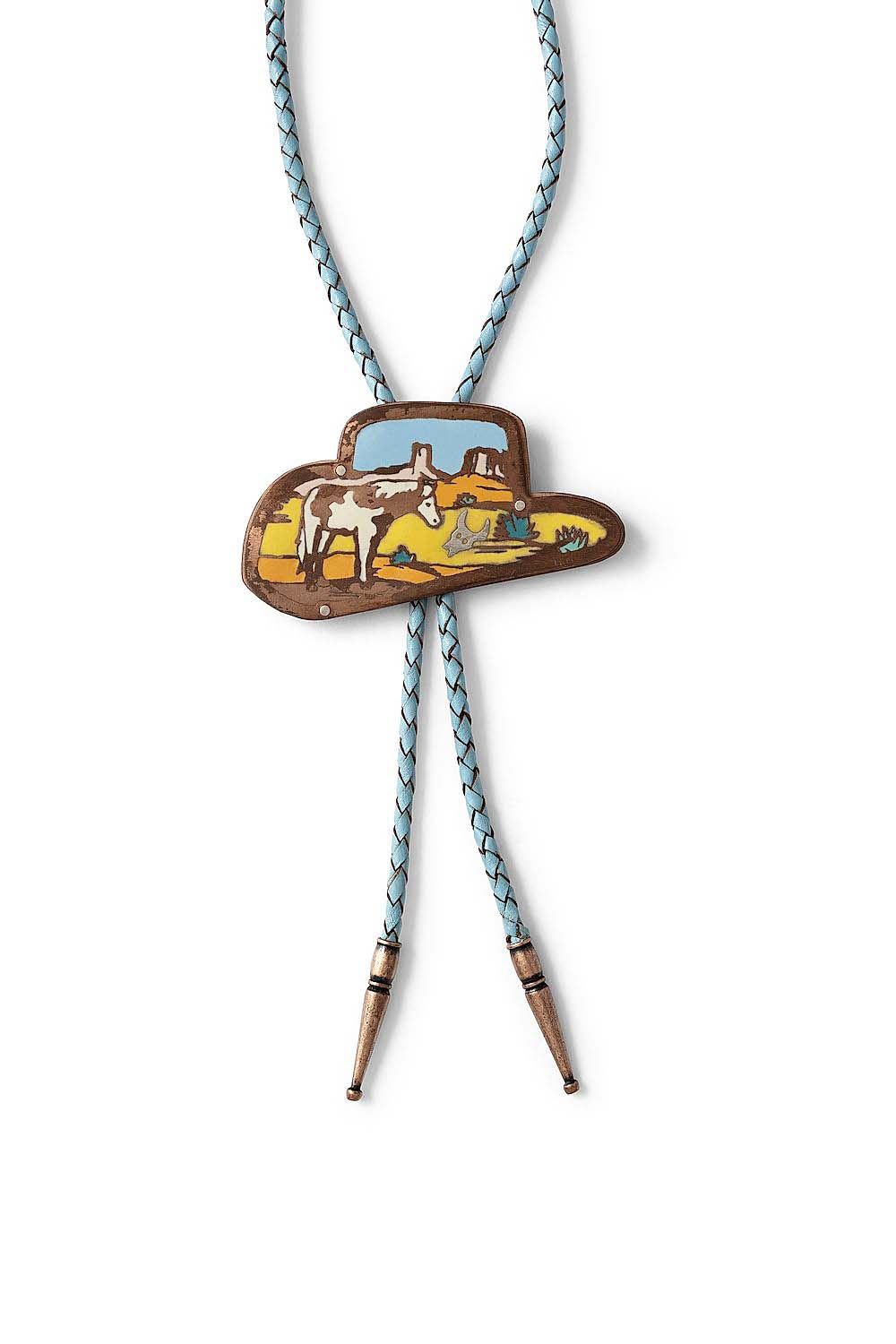
“A Wilder Blue” by Wyatt Nestor-Pasicznyk (he/him), 2023; copper, fine silver, enamel and leather cord; 20 by 3½ by ¼ inches. Dasha Wright photo.
In contemporary times, the bolo has become more than mere adornment. The artists here used the bolo as a leaping off point to explore social issues like people’s relationship with the environment, sexuality or one’s own mortality.
“It’s not just a blank canvas in the way that a generic bracelet or necklace or whatever is. The bolo tie is automatically loaded with meaning because of its history,” Fleetwood said. “It’s almost kind of becoming a blank canvas; the complicated history of the United States in many ways is reflected in the history of the bolo tie. I think there’s a lot of the ugliness and messiness… but the beauty and maybe hopefulness of American history is kind of wrapped up in the bolo tie itself.”
A through line here is the vast potential of the bolo: it’s a theme that the artists represented in the exhibition were only too keen to latch onto. “I think it really opened up a lot of opportunities to speak through this format,” Toussaint said. “It’s a really powerful piece of jewelry and a really powerful format that everybody took their own spin on it.”
Some of the most interesting objects are those that defy easy categorization and occupy spaces in between definitions. The bolo is a fitting example as it’s something in between a necklace and a necktie. Several of the examples featured explore the gender neutrality of the bolo. Aric Verrastro’s bolo, “Through the Cracks,” aptly depicts the dichotomy of what is masculine and what is feminine, creating a flower that belongs to neither gender. Five painted flowers emerge from the center stone, a piece of driftwood, which itself symbolizes a journey.
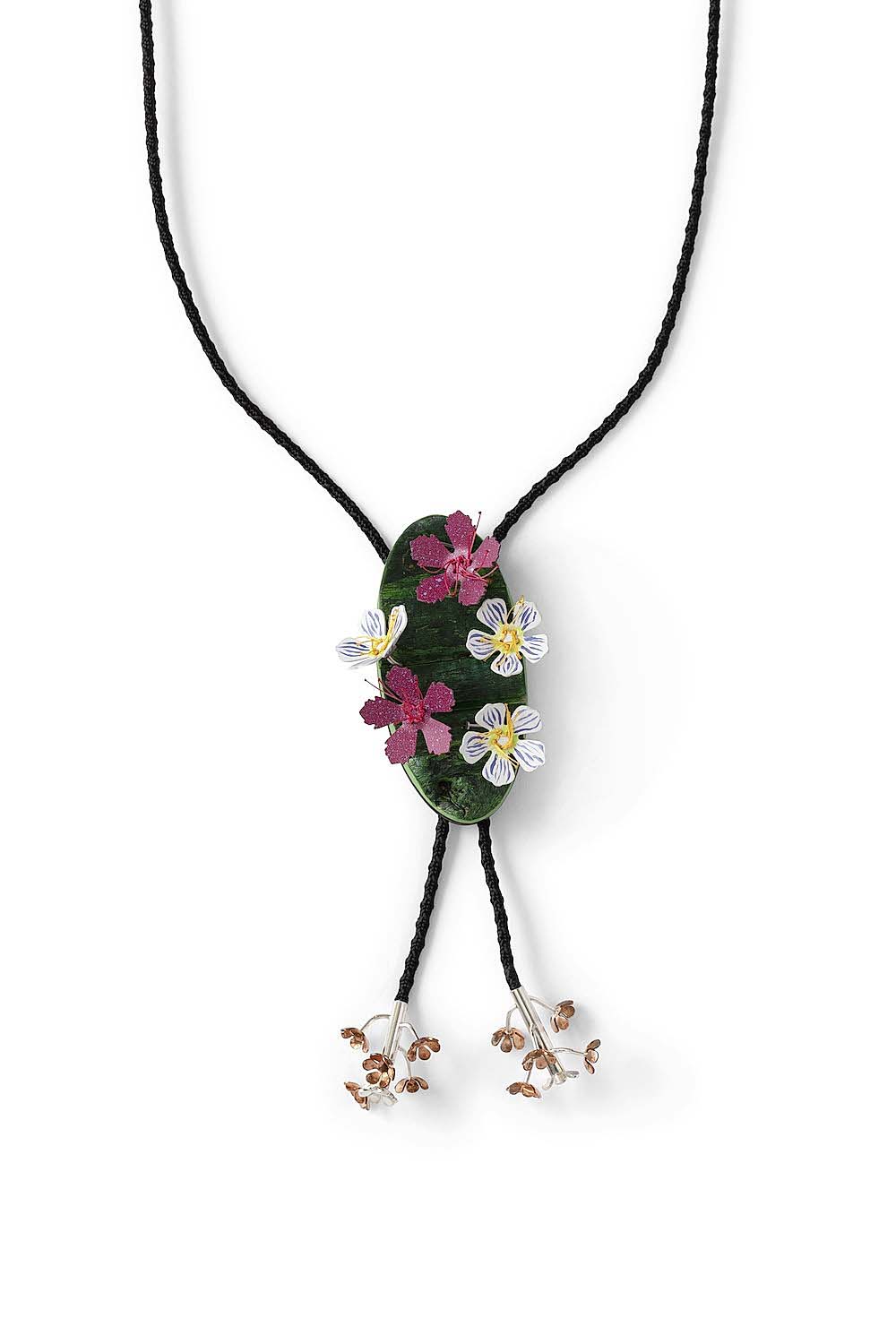
“Through the Cracks” by Aric Verrastro (he/him), 2023; Lake Erie driftwood, copper, sterling silver, steel, polyester cord, nails, thread, ink and acrylic paint; 20 by 2¼ by 1½ inches. Dasha Wright photo.
From its roots originating with indigenous peoples who were often marginalized by Western settlers and the government to its recent reclamation by the LGBTQ+ community, the bolo indeed belongs to everybody.
“Everybody’s Bolos” is on view through June 8.
The Fuller Craft Museum is at 455 Oak Street. For more information, www.fullercraft.org or 508-588-6000.

